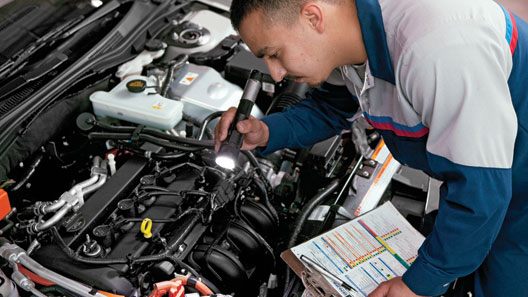How to add Brake Fluid
When you step on your brake pedal, it’s the brake fluid that helps activate your brakes to slow you down. So, brake fluid is important.
But like any fluid in your vehicle, brake fluid needs to be checked regularly and occasionally changed.
Taking a look at the brake reservoir every month will tell you if the level is fine or if you need to add fluid.
If your brake fluid looks a little low, here’s how to top it off.
- With the engine off, raise the hood and find the brake master cylinder. It is usually in the back of the engine bay, on the driver’s side.
- Cover the fender before opening the brake master cylinder and use caution when opening a container of brake fluid, as it can damage your vehicle's paint.
- Use a cloth or towel to clean the master cylinder’s reservoir and cap to prevent dirt or water from entering while you service it. Clean the fluid lines too, if they need it.
- Look at the fluid level on the side of the master cylinder’s reservoir. If your brake fluid is at or above the “MIN” line, your brake fluid level is fine and you don’t need to add any.
- If your fluid is below the “MIN” line, carefully pry the reservoir cap off, and then add brake fluid until the level is just under the “MAX” line. Do not overfill.
- Using a completely clean towel or a lint-free cloth, clean the inside of the reservoir cap: It may have brake fluid, dirt/debris, or both on it, and needs to be clean before you put it back on.
- Carefully set the reservoir cap on the reservoir, and press down on all four corners until it clicks into place.
- Visit your local Ford Dealership to have your brakes inspected as soon as possible—especially if your fluid level continues to go down, or if your fluid is dark. You may need your brake system serviced.
Quick Tip
There are three main types of brake fluid: DOT 3, DOT 4, and DOT 5.
DOT 3 and 4 are glycol-based brake fluids, and the main difference between them is the boiling point: DOT 4 boils at a higher temperature, which can be beneficial if your brakes see very heavy use, or if you participate in motorsports. Of course, you should check your owner’s manual first to make sure DOT 4 can be used in your vehicle.
DOT 5 fluid is silicone-based: It doesn’t absorb moisture like DOT 3 and 4 fluids do, and it has a higher boiling point. However, DOT 5 fluid should never be added to vehicles that specify DOT 3 or 4 fluid, as brake system damage can occur.
